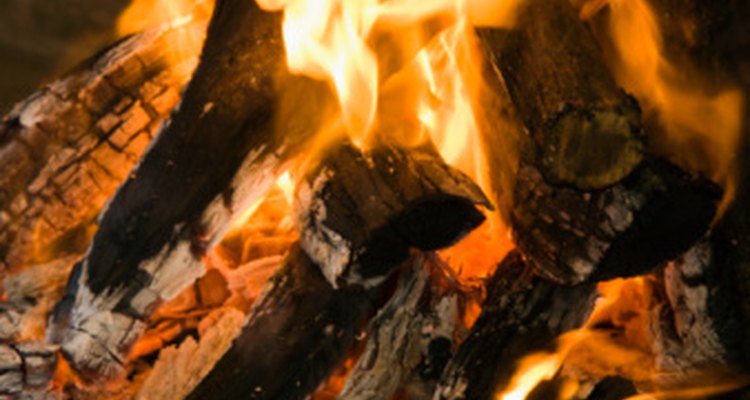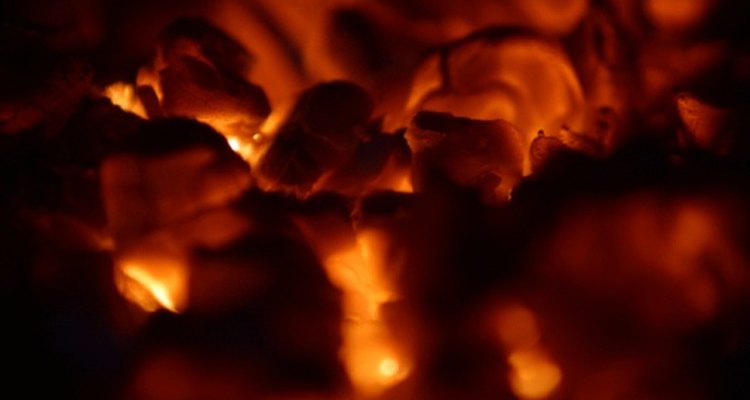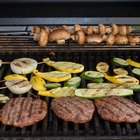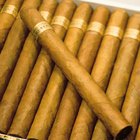
Making a wood fire in your barbecue pit instead of using charcoal takes a bit more time, but with patience and the right tools it can easily be done. How you build the fire depends somewhat on the style barbecue pit you have, but the general fire-building rules are the same. A wood fire provides a longer, slower cooking process that produces juicy, tender meats and vegetables with a distinct smoky flavor.
Setting Up
Remove any grates or grills covering the top of the barbecue pit. If your pit has a door to the fire pit and the grill surface to one side, open the doors.
Make a pile of small kindling in the center of the pit. Shredded paper, cardboard, wood shavings, and dry grass all work well for kindling. The bigger the pile of kindling, the better: the longer the kindling burns, the more time it has to catch the twigs on fire.
Over the pile of kindling, arrange small sticks and twigs in a teepee shape. The idea is for the kindling to catch the small sticks on fire, which will burn longer than the kindling, and then transfer heat to the logs.
Squirt some liquid or gel lighter fluid on your bigger logs before placing them in the pit. Put on enough lighter fluid that the logs catch in various places, but don't saturate the wood.

Arrange wood pieces around the small sticks, again in the teepee shape. You can also lay the logs flatter; just make sure they touch the smaller teepee without squashing it. Anything from dried tree branches to standard fireplace logs, or even scrap wood from building projects, works for your major wood pieces. Place the wood on the stack gently so you don’t collapse the previous layers.
Lighting the Fire and Keeping It Lit
Wearing a heat-safe glove, carefully light the kindling with a barbecue lighter, or light the end of a stick on fire and hold it to the kindling until it catches. Light several spots in the kindling to get the fire going faster. Do not to ignite the lighter fluid on the logs; the flames will shoot up and burn you with little warning.

Blow gently on the kindling to re-ignite the embers. A bellows can also be used to do this. Allow the kindling to burn, giving it enough time to heat and catch the twigs. If your kindling burns up too quickly, carefully add more, wearing the heat-safe glove.
Allow the twigs to catch fire, then carry the flame up to the logs. The lighter fluid on the logs should increase the fire's intensity enough that the logs eventually catch fire. You can strategically add more lighter fluid to the logs to help them catch. However, simply dousing the logs with lighter fluid indiscriminately only wastes fluid, as it burns off quickly without properly igniting the logs.

Once the fire is burning steadily, the logs have caught, and parts of them are glowing red, you can replace the barbecue grill top, if you plan to cook over the flame; leave it open if you want to toast marshmallows or simply warm your hands while you’re outside. If your fire pit has a door, shut the door and open the grill top, which should be receiving heat by this point.
Add a log to the fire about once every hour. Do not smother the embers in the fire's center when you add new logs.
Related Articles

How do I Cook With the Brinkmann Gas ...

How to Cook on a Charcoal Grill

How to Light a Hibachi Grill

How to Grill Grouper Over Indirect Heat

How to Mix Wet Wood & Charcoal for a ...

How Do I Start a Mesquite Wood BBQ?

How to Use Mesquite Chips on an ...

How to Relight BBQ Charcoal
How to Cook Sturgeon on the Grill

How to Cook With a Gas Fireplace

How to Use a Weber Gas Grill: First ...

How to Cook a Brisket in the Ground

How to Cook Ribs Over an Open Pit

How to Cook Filet Mignon Medallions on ...

How to Make Fabulous Pizza on a Gas ...

What Is a Substitute for Lighter Fluid?

How Do I Cook a Hot Dog on a Fire?

How to Start a charcoal fire without ...

How to Make Nachos Using Shredded Cheese

Instructions for Dunhill Rollagas
References
Writer Bio
Madeline Masters works as a dog walker and professional writer. In the past she has worked as a fitness columnist, fundraising copywriter and news reporter. Masters won two Pennsylvania Newspaper Association Awards in 2009. She graduated from Elizabethtown College with a Bachelor of Arts in English.
Photo Credits
Jupiterimages/Photos.com/Getty Images